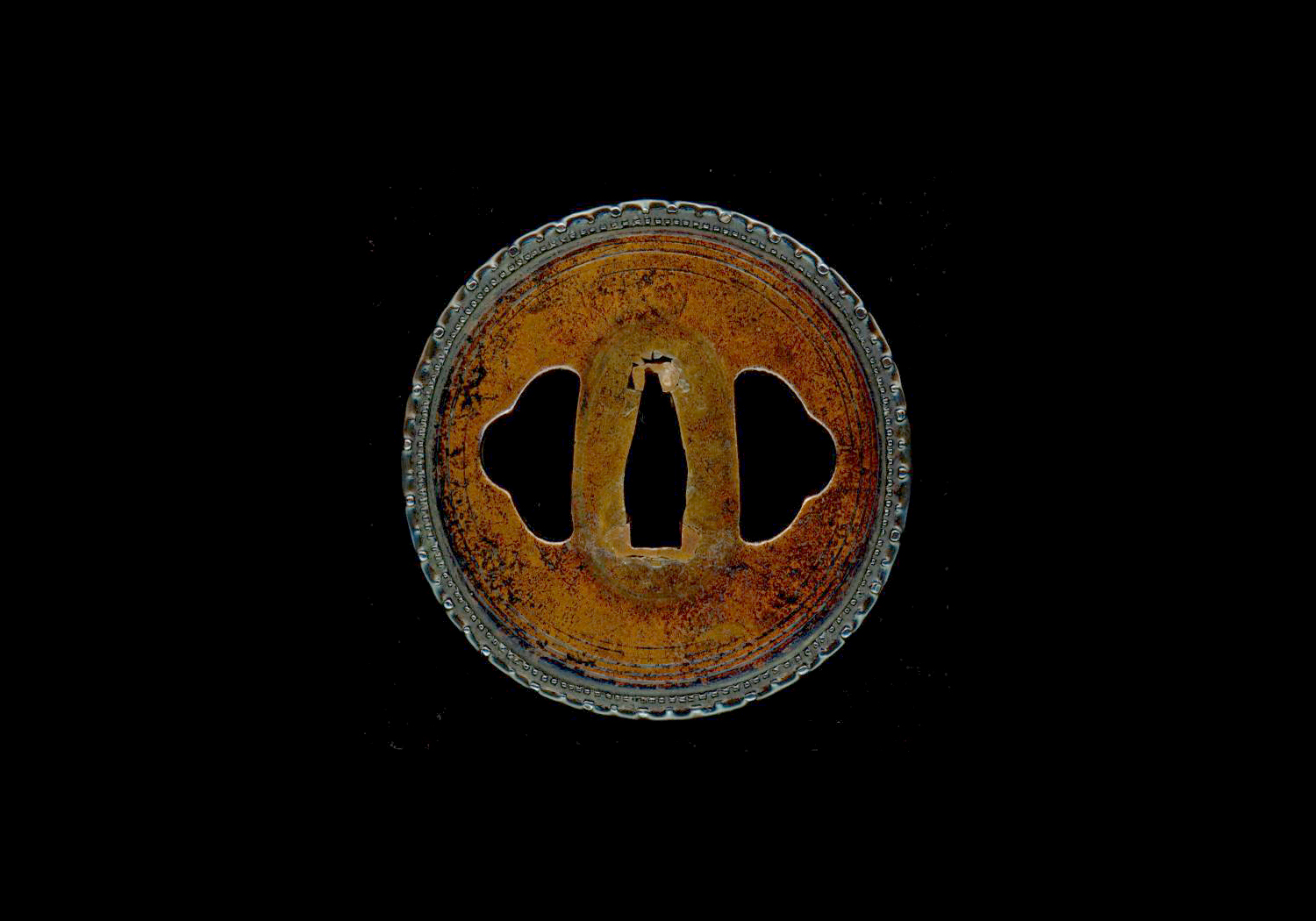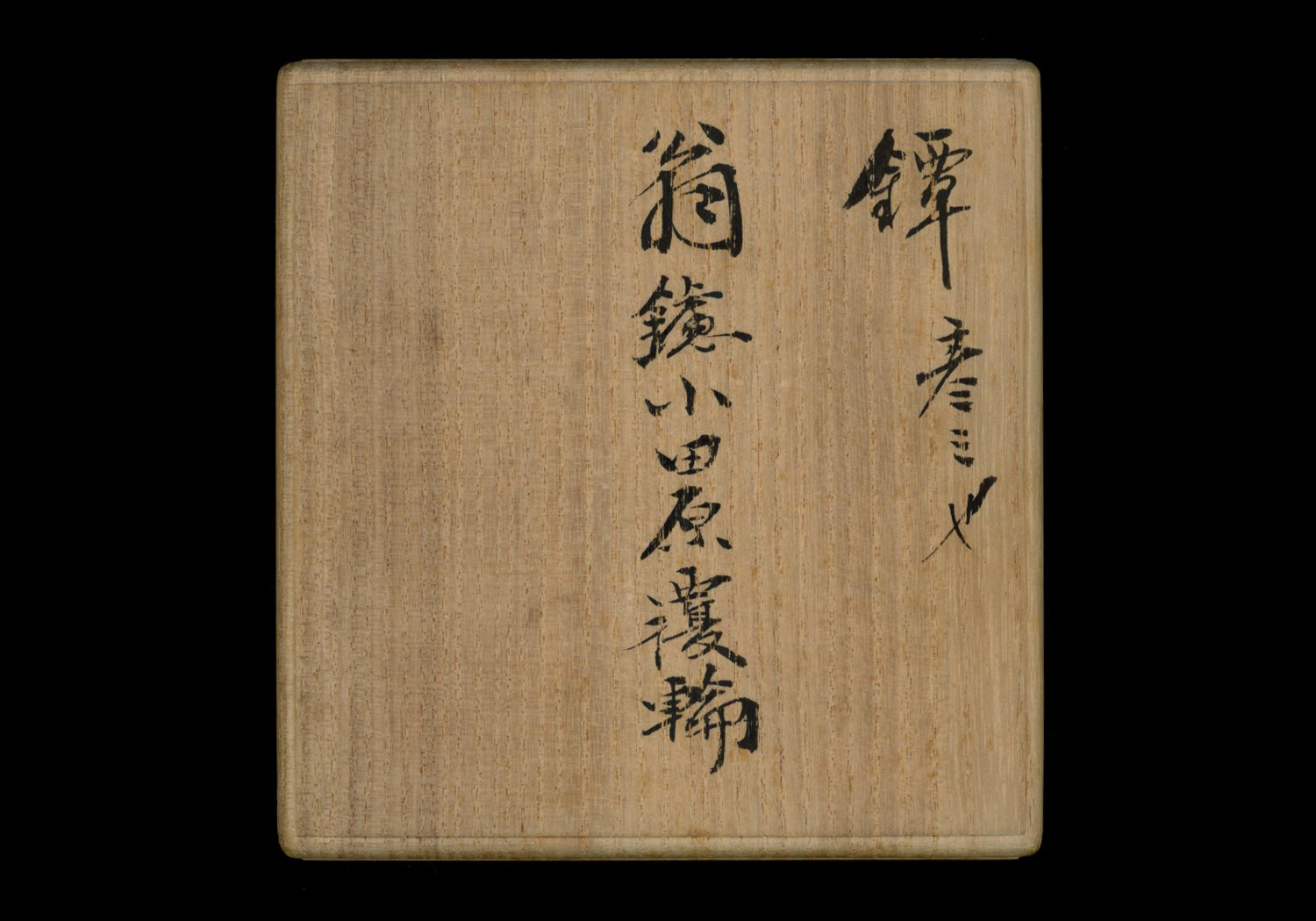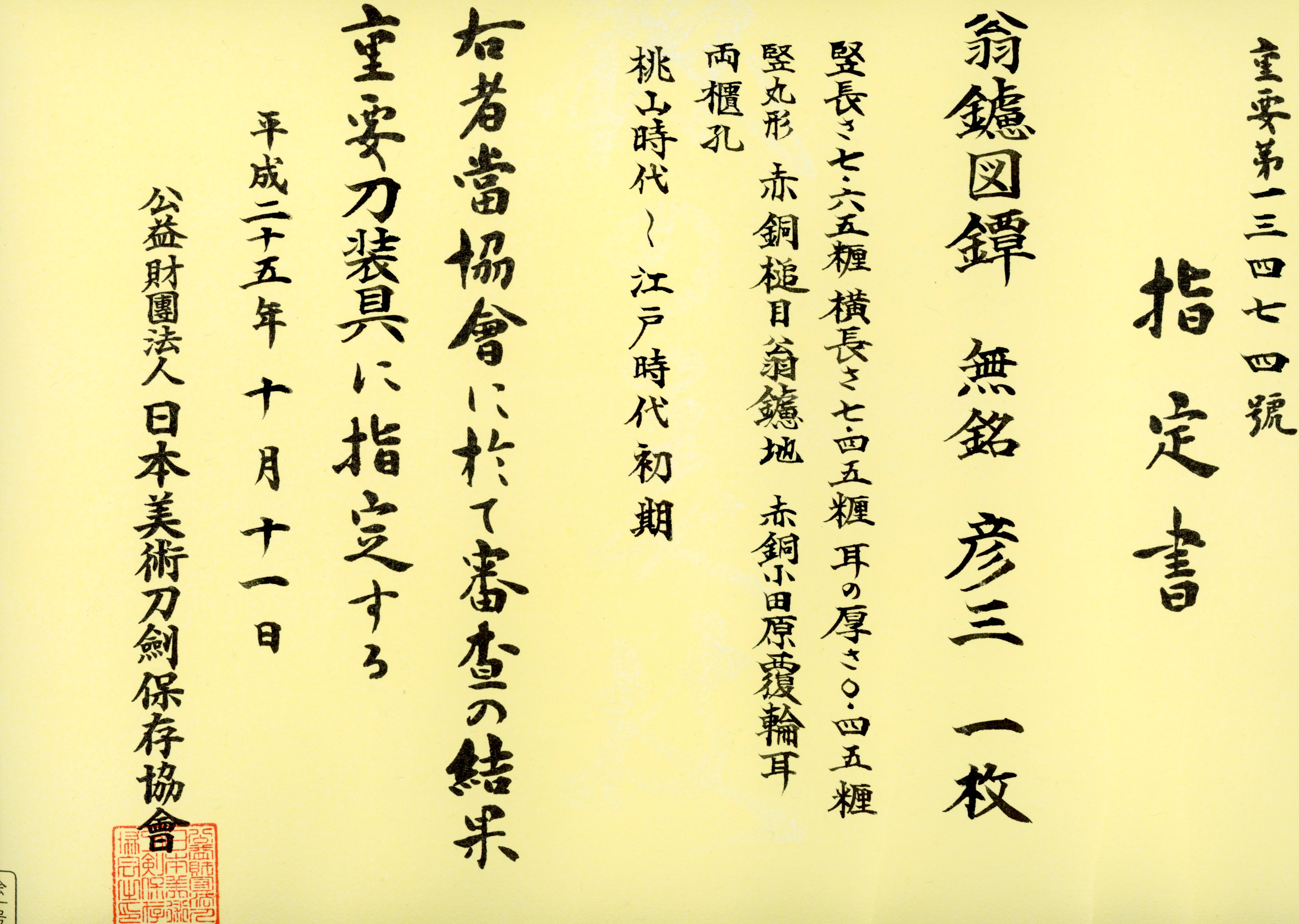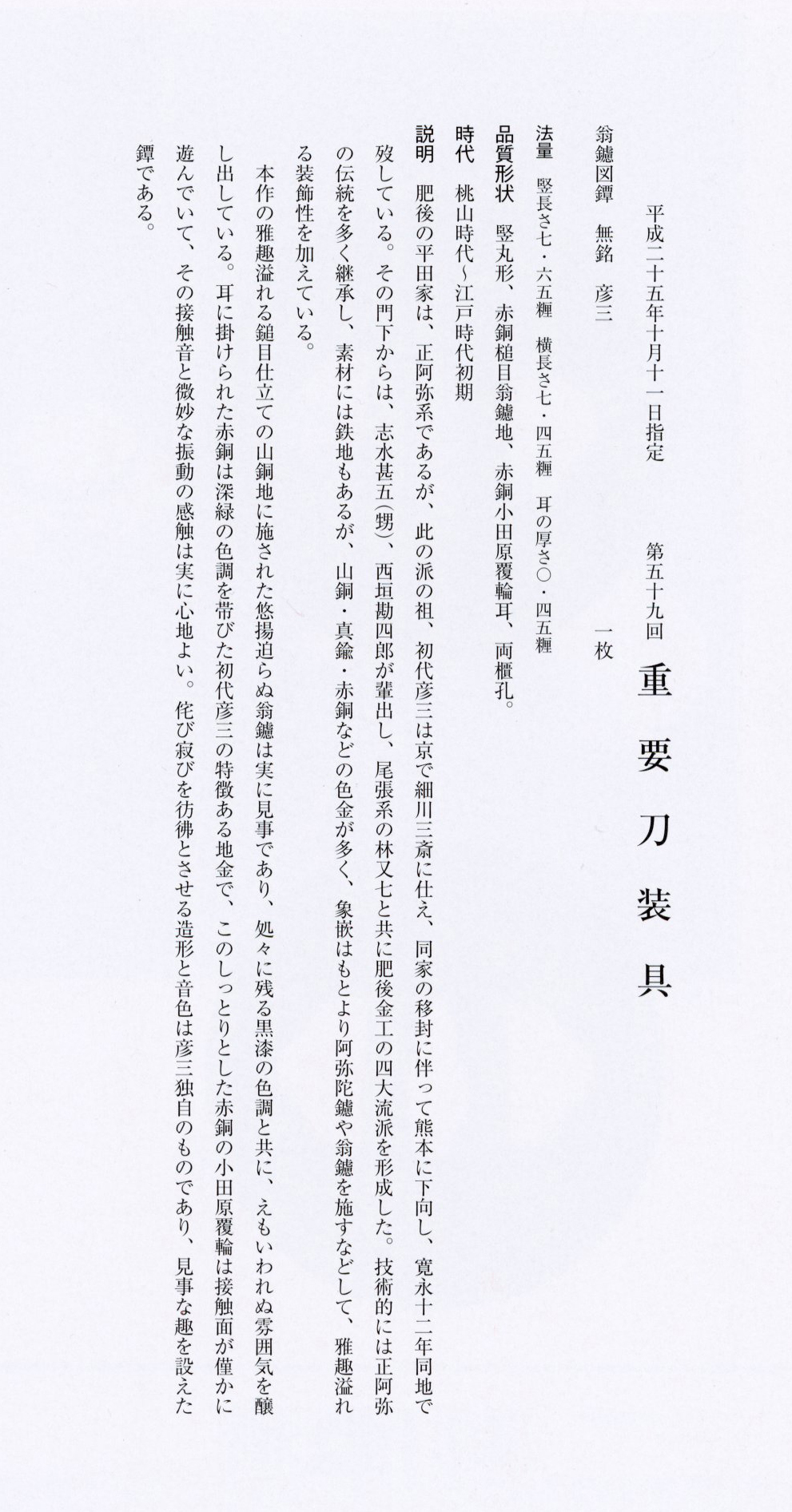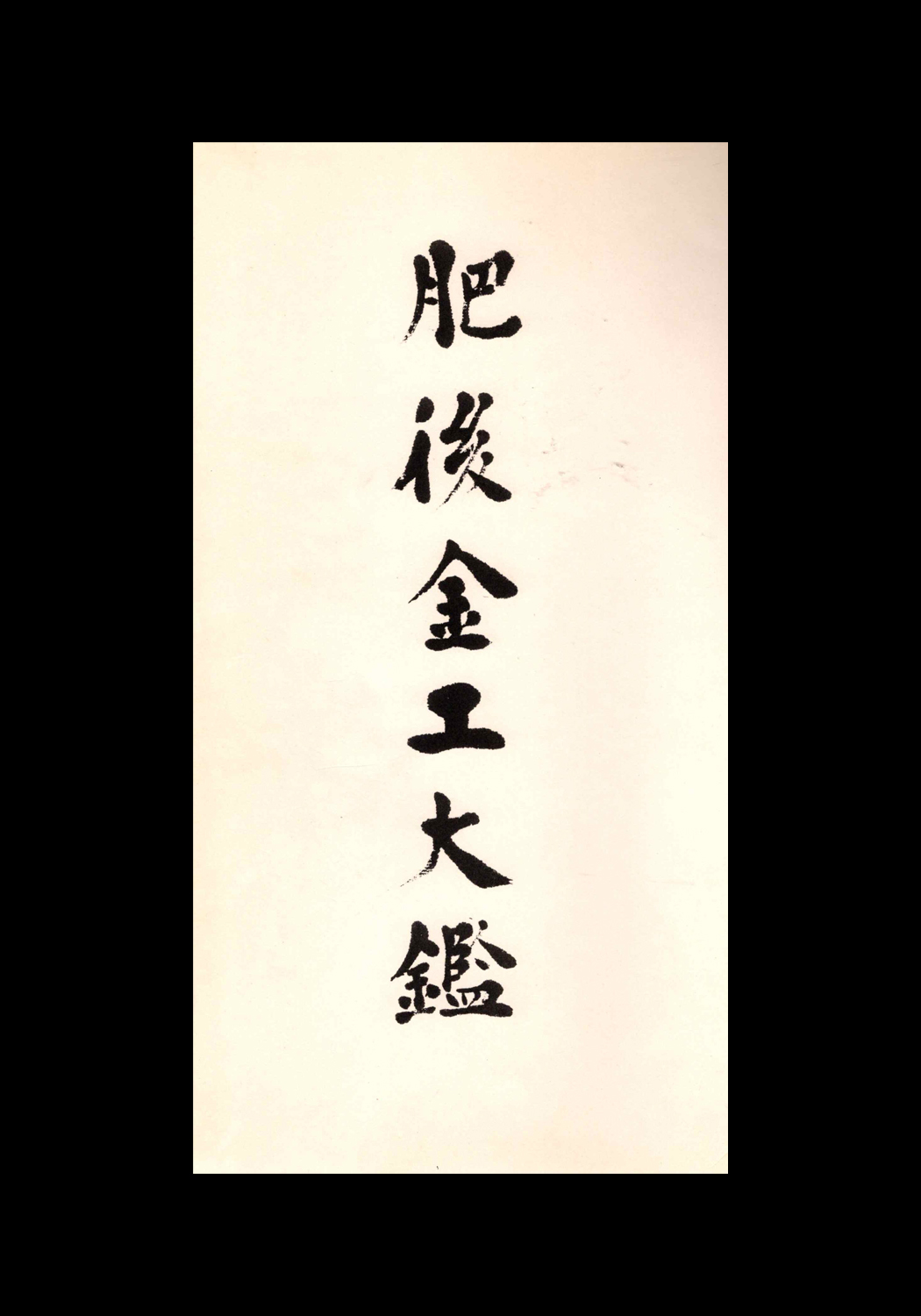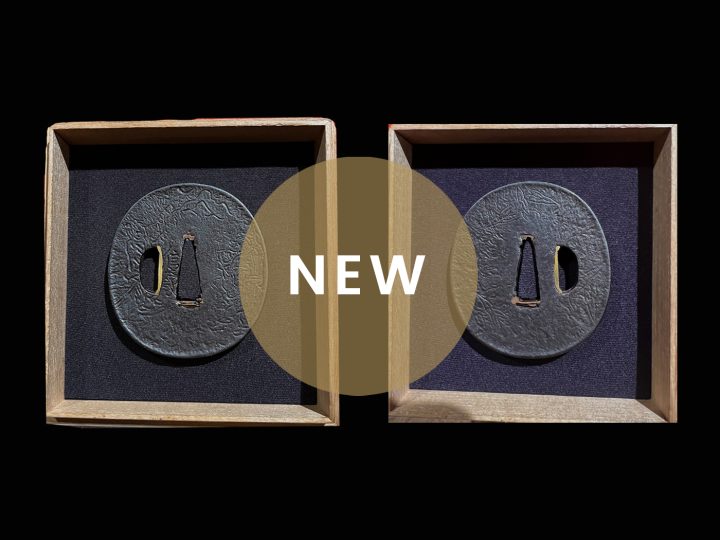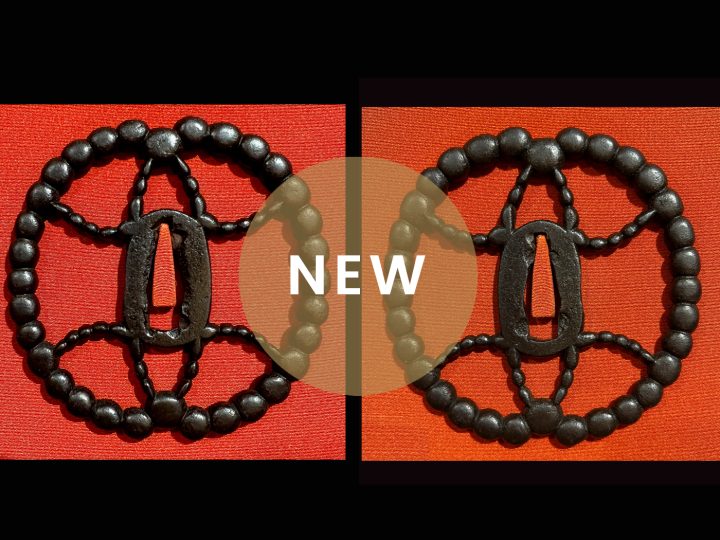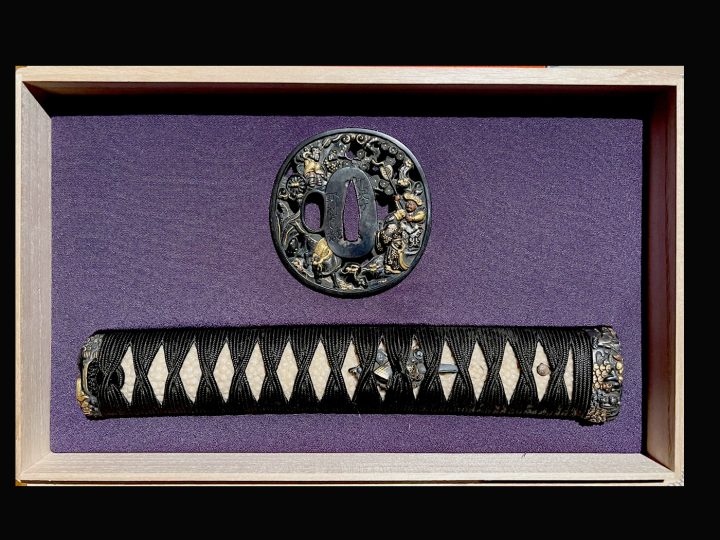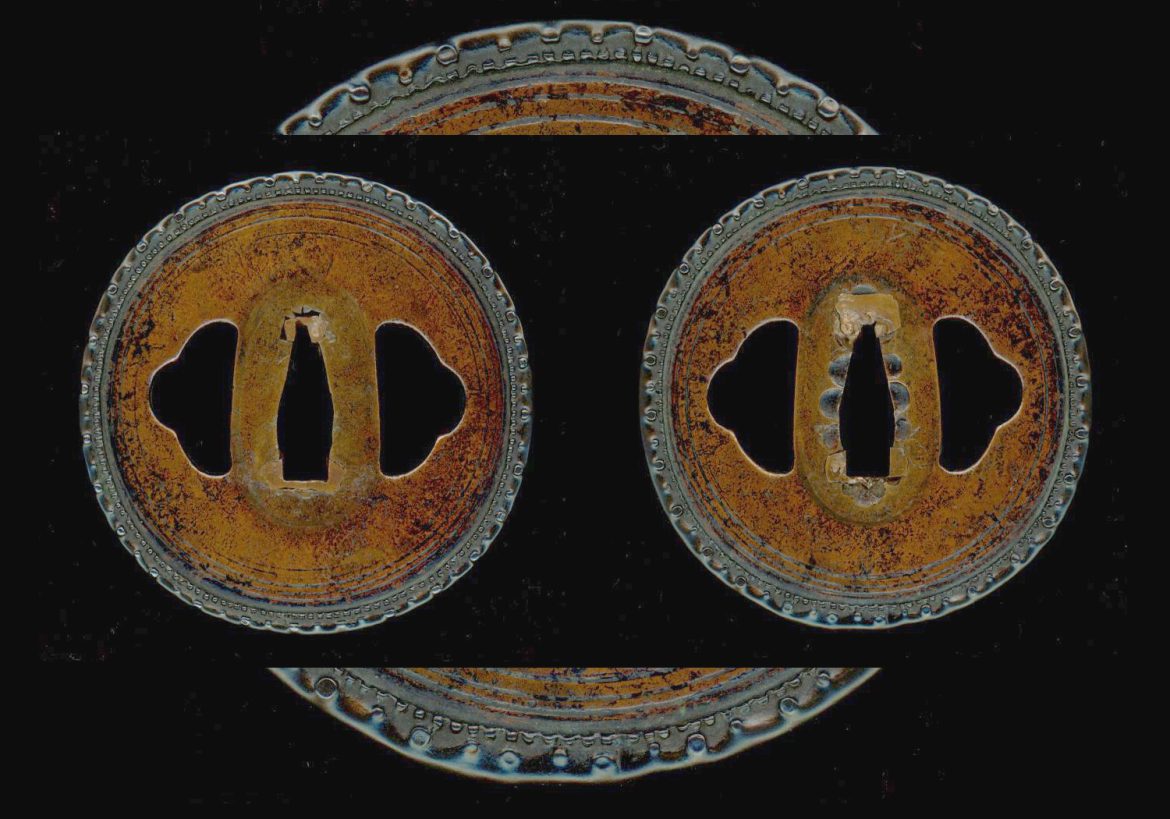
Nihonto.com is extremely proud to offer this top quality example of one of the most famous of the Higo tsubako, Hirata Hikozo. This tsuba is an wonderful example of the finest work of this famous fittings maker. It has been published in the Higo Kinko Taikan and the NBTHK awarded it Jûyô Kodogu status in 2013. The following is a translation of the Jûyô Kodogu zufu describing this piece much better than I can.
Designated Jûyô Tôsôgu at the 59th Shinsa of 11 October, the 25th year of Heisei (2013)
Tsuba with Okina Yasuri; Mumei, Hikozô [彦三].
Measurements: height:7.65 cent.; width: 7.45 cent.; thickness at mimi: 0.45 cent.
Features: Tatemaru-gata, shakudô (should be yamagane?) with hammered ground and okina yasuri, shakudô Odawara-fukurin mimi and two hitsu-ana.
Period: Momoyama to the beginning of the Edo Period.
Explanation: The Hirata [平田] family of Higo were part of the Shôami School [正阿弥系], and the founder of the Hirata School, first generation Hikozô, was retained by Hosokawa Sansai [細川三斎] (Tadaoki [忠興], 1564-1645) in Kyoto. When the Hosokawa family was transferred to Kumamoto, Hikozô went along with them, and he died in that area during the 12th year of Kanei (1635). From his school, there was established the four great schools of Higo kinkô with the appearance in succession of Shimizu Jingo [志水葚五] (a nephew) and Nishigaki Kanshirô [西垣勘四郎] along with the Owari School Hayashi Matashichi [林又七]. In terms of techniques, they largely inherited the Shôami traditions, and although they also used iron as one of their materials, they mainly used such colored metals as yamadô (yamagane), shinchû (brass) and shakudô. Of course, they used inlays; however, they more typically used Amida yasuri are okina yasuri. Their works are overflowing with elegance with the addition of a decorative function.
This work is overflowing with elegance, and the hammered finish executed on the yamadô ground has a free and easy air, while the okina yasuri are truly splendid. Here and there are the remnants of black lacquer, which, together with the color tone of the piece, creates an exquisite atmosphere. The shakudô fukurin on the mimi adds a deep green hue to the first generation Hikozô’s characteristic jigane, and the quiet mood of this shakudô Odawara fukurin surface is slightly playful. The tone of its surface and the feeling of a delicate contrast is truly sensational. The austerity (wabi) and patina (sabi) closely resemble the shape and palate of Hikozô’s characteristic works, and it is a tsuba that splendidly establishes the charm of his creations.
This beautiful tsuba comes in a double custom made box. The inner box has a hakogaki by the late NBTHK founder, Kanzan Sato. This is a rare opportunity to own a truly great piece of tsuba history and work of art.
PRICE: $55,000.00

